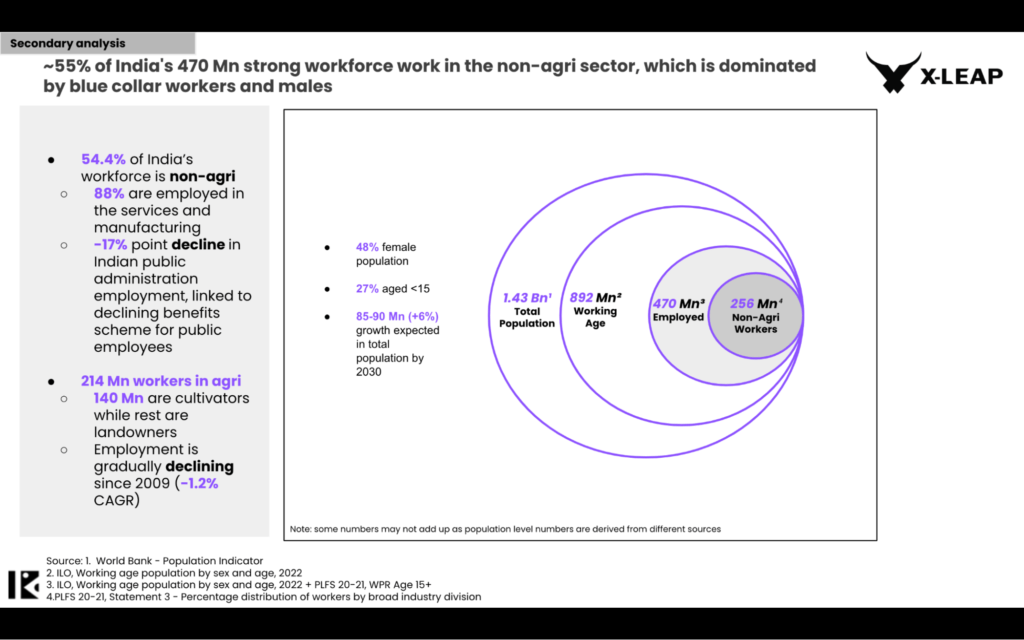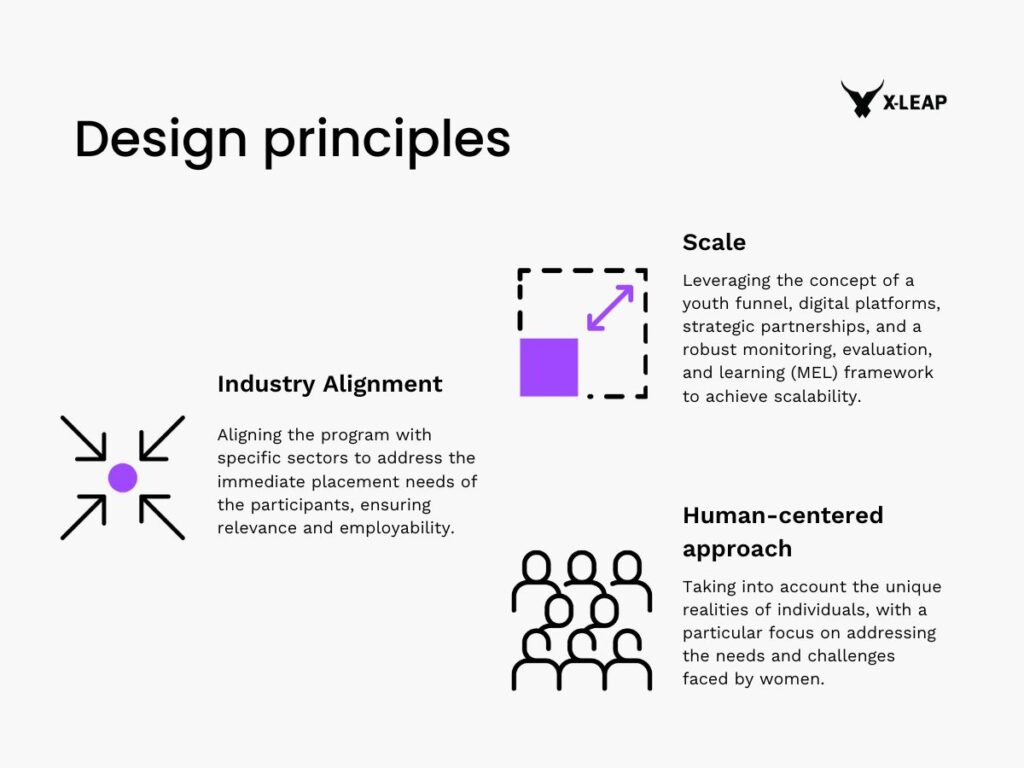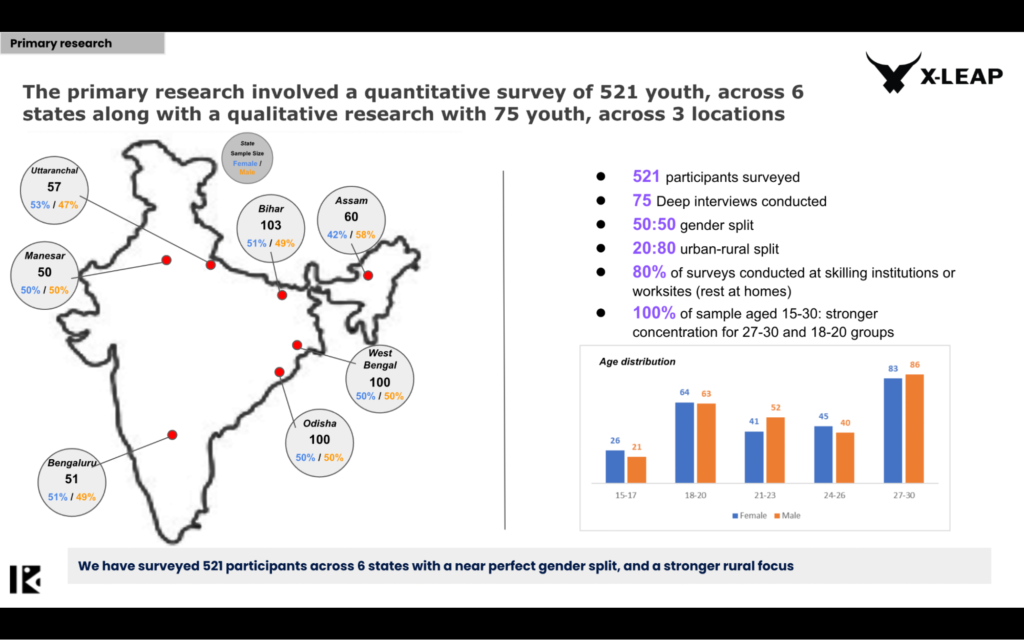A leading CSR foundation wanted to solve for the critical skill and employment gap plaguing the country’s youth, especially women. X-Leap worked with the foundation to develop a program that was industry-relevant, and took the aspirations and local conditions of the target group into account.
As a young Teach for India fellow, I was always amazed by the remarkable potential shown by the brilliant young students I worked with. They carried a spark of hope and enthusiasm for their future. However, there were times when I was deeply concerned about the genuine struggles that many of these kids would go on to face while getting job opportunities. This was true, especially for younger women, and it’s a problem we’ve had for a while.
The Case for India’s employment problem
All these challenges were always on the top of my mind. This is why I was very excited when I was asked to work on a project addressing employment challenges in India. Our client’s focus was to create a scalable model that would offer sustainable income growth for disadvantaged communities, especially women.
This had me digging through multiple reports and research articles, trying to figure out the root cause of these issues. The desired result was to develop a comprehensive solution or program that could effectively cater to the needs of unemployed individuals on a large scale. The program would offer holistic support, covering both rural and urban areas in order to address the unique challenges faced by the youth in securing employment opportunities
Through secondary research, we identified which sectors the workforce was involved in:

The four key challenges
The program was designed to tackle four critical challenges: scale, disruption, equity, and quality.
Scale: Currently only 2.3% of the workforce in India has undergone formal skill training. The construction industry mentions a ~50% shortage in skilled workers, while retail industry leaders are struggling with a talent shortage.
Disruption: According to industry experts, nearly 70% of jobs are set to be disrupted and may become obsolete by 2025. This is critical as there already is a large digital divide in the country with more than 90% of digital employment existing in urban India. Here, 73% of the workforce is men. What about rural men and women?
Equity: Estimates of the employed population vary from 487-520 million, but the workforce is predominantly male and blue-collar dominated (>70%)
Quality: Less than 8% of the workforce have completed their higher secondary schooling. Experts highlight this as a key reason for poor life skills and learning ability, leading to poor employability and thus wages. According to several experts in the ecosystem, “Improved access to higher-quality skills will boost productivity and efficiency throughout the economy by 54%“

What our research found
Our analysis included field-based data collection, interviews with industry experts and secondary research. It helped us identify an unexplored opportunity within the ecosystem that aligned well with industries and offered significant growth potential.
We found that nearly half of our 521 respondents were primary breadwinners for the family, out of which 10% of the respondents were unemployed.
Most worked in factories or farm-linked jobs, with 40% earning less than INR 10,000 monthly.
Many of them aspire to get further education and upskilling done, while, compensation, comfort, and government jobs are still largely preferred. Migration within a respondent’s state is favored. These findings show the importance of tailored interventions in order to address the needs and goals of the youth.

What the solution looked like
Step 1: Designing for Equity
The first step was to look at ways to reverse the gender gap in the ecosystem. This is only possible if the aspirations for working women, or those looking for work, is specifically taken into account. We look at factors like local employment, flexible work arrangements, and addressing the life skills gap, including confidence and self-esteem.
Step 2: A ladder model
The “Ladder” model provides individuals from economically disadvantaged communities with the necessary skills, support, and inspiration to overcome livelihood challenges. In this context, a ladder approach was important to nurture individuals in the early stages of their careers. In addition, programs were offered that focused on developing transferable skills, building self-confidence and resilience, and providing access to role models and long-term support.
Step 3: The Good Career Framework
A Good Career Framework was developed, that offered a structured and effective process for career development, enabling individuals to overcome unemployment and navigate the job market. The framework would help in identifying an aspirant’s position on the career ladder. They would be guided through each step including job market navigation, preparation for suitable work environments, and aligning aspirations for long-term success
Step 4: Formalizing and skilling local gig workers
It IS important to also extend support to gig workers within the ecosystem. Through the program, we found that that a combination of formalizing of businesses (registration of business, obtaining license, access to financial services) and providing skilling programs would go a long way in enhancing their experience and long-term employability.
If you want to know more about this case study, or wish to solve for a similar problem, please write to saikat_ghosh@x-leap.com




